
Research
Soft Material Physics and Function
Soft materials such as elastomers and gels exhibit extremely low modulus and reversible high extensibility due to their elasticity of entropic origin, which are unparalleled properties in solid materials. Polymer strands in soft materials possess liquid-like high mobility and form disordered three-dimensional network structures. These soft materials are rheologically categorized as “solids” due to their non-flowability. Nevertheless, they exhibit the entropic elasticity like the “gas” pressure and some viscous aspects like “liquids”.
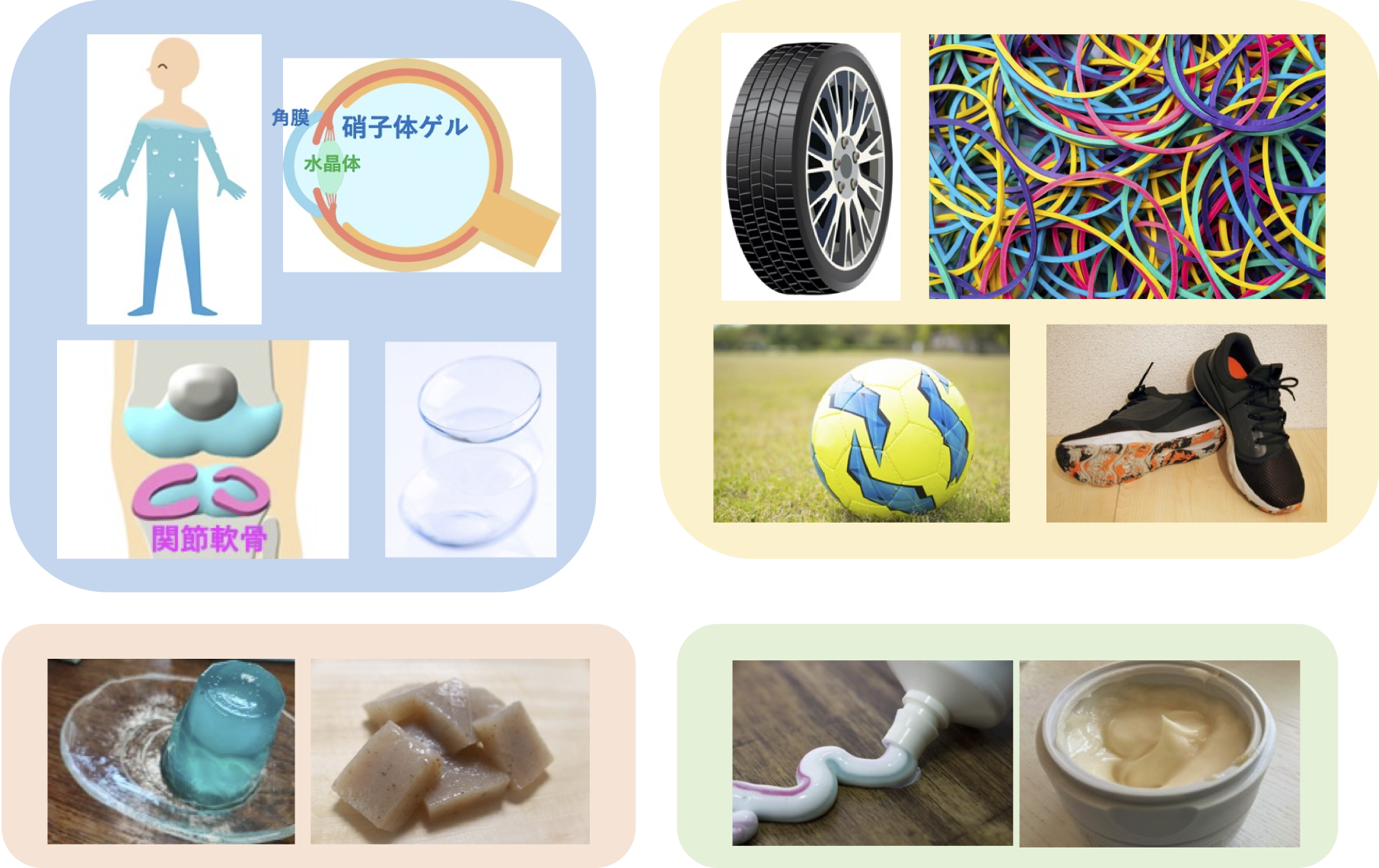
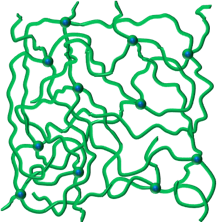
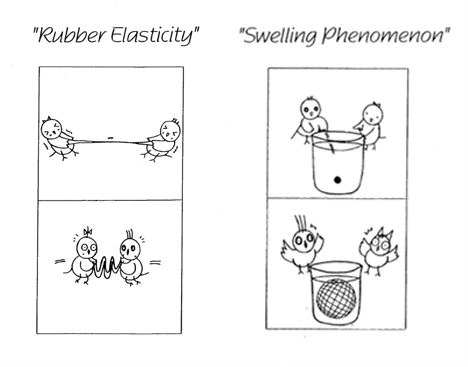
Soft materials play an indispensable role in our daily life as the commercial products like contact lenses, tires, foods and cosmetics. Human body is made up of 60% of gel-like materials. Physical properties of soft materials with two sided character (liquid and solid), however, still remain to be elucidated because the classical methodologies established in hard materials and fluids are not directly applicable. Physical analysis of soft materials requires the approaches including the rheology and nonlinear physics.
Soft materials can be stimulus responsive, i.e., exhibit a function in response to external stimuli such as mechanical stress, temperature change, and light irradiation, when utilizing their liquid-like high molecular mobility and internal freedom. Soft materials are intensively investigated as a promising material and element for functional devices and actuators.
We aim to elucidate the physics that governs the structure, properties and functions of soft materials utilizing the novel and unique methodologies. We currently focus on the following issues:
- Precise analysis and exploitation of mechanical properties of soft materials
- Stimulus-responsive properties of liquid crystal elastomers/gels
- Suspension dynamics of functional microgels
- Rheological properties of soft materials of natural polymers
1.Precise analysis and exploitation of mechanical properties of soft materials
<Multiaxial analysis>
Biaxial stretching with various combination of the two orhogonal strains covers a wide range of physically accessible deformation, providing a definite basis for comprehensive understanding of nonliner elasticity of the material of interest. There are, however, few corresponding studies due to the complexity of the multi-axial tensile testers. We develop the custom-made biaxial testers which enable to investigate various elastomeric materials ranging from rigid filled rubber to super-soft gels undergoing self-bending.
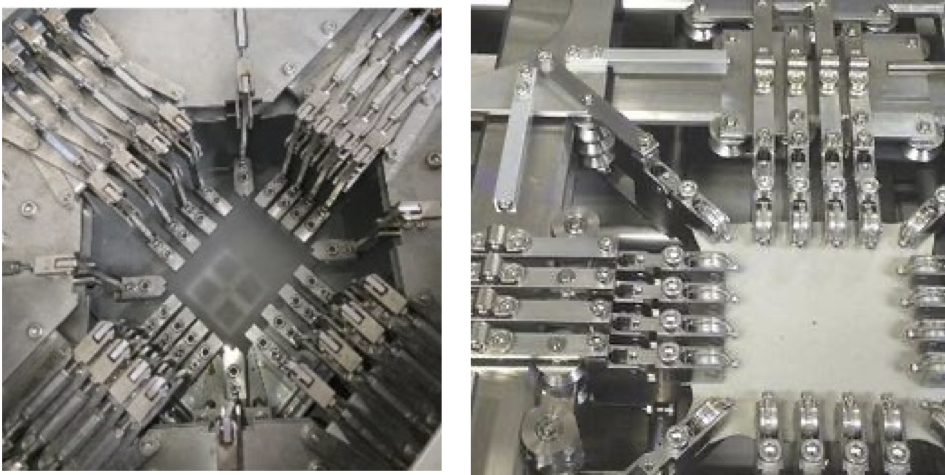
<Crack growth dynamics>
Crack propagation plays a major role in fracture of materials. The crack-growth velocity ranges from extremely slow speed to high speed exceeding the sound (shear-wave) velocity, while the crack-propagation mechanism depends on the velocity regime. We investigate the crack-growth mechanism in elastomers and gels by analyzing the propagation velocity, the crack-tip shape and crack-tip strain field using a DIC technique with high speed observation.
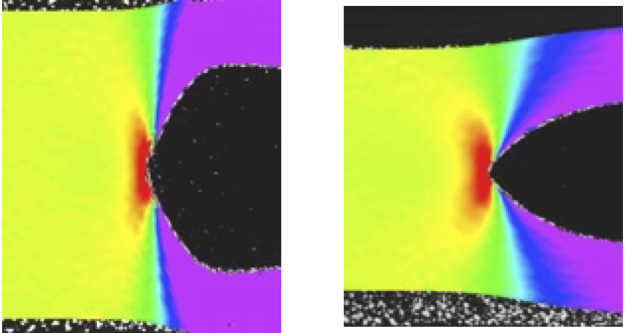
<Toughening by strain induced crystallization>
Natural rubber (cis1,4-polyisoprene rubber) possesses a self-reinforcement mechanism via strain induced crystallization (SIC): SIC drives a hardening and an enhancement in crack durability, contributing to industrial use requiring high performance such as aircraft tire. The research of SIC has a long history, but the details of the excellent mechanism still remain to be revealed. We aim to elucidate the molecular mechanism of SIC and resultant mechanical reinforcement, and to establish the design principles of novel elastomers with high toughness.
<Developing mechanical properties via tuning of network structure>
Three dimensional networks of soft materials have many structural factors including the cross-link type, length and its distribution of network and dangling chains, and permanent entanglement coupling of network strands. We reveal the design principles to achieve the markedly high extensibility, high damping and low modulus by tuning these structural characteristics.

2.Stimulus-responsive properties of liquid crystal elastomers/gels
Liquid crystal elastomers (LCEs) are a rubbery polymer network with liquid crystallinity. A unique feature of LCEs is that the macroscopic shape is strongly correlated with the mesogen orientation, and vice versa, owing to the coupling of rubber elasticity and liquid crystallinity. This feature enables us to actuate the elastomers by various types of external fields such as temperature change, electric and magnetic fields that drive a finite variation in the LC orientation. Thus LCEs have attracted considerable interest as a promising stimulus responsive material, soft actuators and sensors. We fabricate the LCEs with controlled director configuration including nematic, twist nematic, cholesteric alignment, and investigate their response properties to various types of external field.
LCEs exhibit peculiar mechanical properties resulting from the LC reorientation coupled with external deformation (called “soft elasticity”). For instance, LCEs require a markedly small mechanical work for uniaxial elongation when accompanied by the director rotation towards the stretching axis, and also show a markedly large energy dissipation under oscillatory strain. We study the unique mechanical features resulting from soft elasticity.
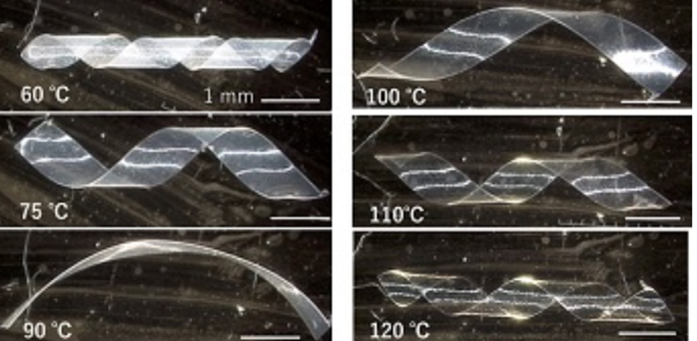

3.Suspension dynamics of functional microgels
uspensions of soft microgel particles can be concentrated far beyond the threshold concentration of random close packing estimated from their isolated dimensions, because the soft microgels can undergo deformation, deswelling and interpenetration. Such highly dense microgel suspensions (called “pastes”) behave as a “yield stress fluid”: They behave as elastic solids when the imposed strain or stress is below the critical value, while they flow when the external stimuli is beyond the critical value. These interesting rheological features of soft microgel suspensions enable a wide range of applications such as cosmetics, foods and paints, etc.
We investigate the rheological behavior of the thermoresponsive microgel suspensions with well-characterized structural factors such as cross-link density, particle diameter, and size distribution. We aim to establish a definite basis towards the rheology control of the suspensions via the molecular design of the microgels. We proceed this study in collaboration with the group of Prof. Daisuke Suzuki in Shinshu University, the experts in the synthesis of well-characterized and novel microgels.

4.Analysis of physical properties and creation of new functional materials
As the awareness of the global environment rises, materials from natural polymers have been paid much attention. Among natural polymers, we focus on polysaccharides, such as cellulose, amylose, and chitin, and investigate their physical properties. Our studies cover the mechanical properties of films, the deformation behavior of gels, and the rheological properties of solutions. And we are working on the creation of new materials leveraging our knowledge obtained through those studies. We would like to contribute to green chemistry by developing basic science of polysaccharides as well as by expanding polysaccharides into applied fields. As for experimental methods, we fundamentally conduct rheological measurements and combine optical methods such as polarization modulation spectroscopy. We also aim to establish new experimental methods by fusing various experimental methods.




